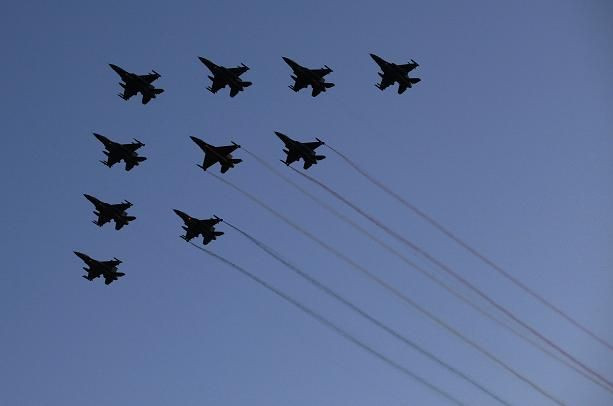Singapore Airshow: Middle East Fears And Pentagon Cut Backs Prompt Large U.S. Defense Presence At Arms Event

While Team USA competes for medals on the slopes and ice of Sochi at the 2014 Winter Olympics, another U.S. team is also competing to win, but not for something as tangible as gold medals, but instead for lucrative arms deals.
Almost 5,000 miles away from the glare of snow and the world’s media, the Singapore Air Show, which started on Tuesday, is a competition that’s value is far easier to measure. Nations and companies will compete against each other for a slice of the $1.5 trillion spent every year on arms around the world.
This year is particularly important for American defense companies as Pentagon cut backs have disrupted their normal operations and threatened jobs and projects. By current estimates, defense investment in Asia is expected to be worth around $380 billion, of which a third is still up for grabs.
According to the Stockholm International Peace Research institute, sales from the world’s top 100 companies doubled from the beginning of the decade to $410 billion in 2011 of which 60 percent is attributed to U.S. companies. Firms in Western Europe accounted for 29 percent, Russian companies had 3.5 percent and the rest came in at 7.8 percent.
While security concerns persist in the Middle East, U.S. companies will continue to get a majority of their business from there, around $42.5 billion in 2013, according to Bloomberg Government analysts. This compares with $22.5 billion for the Asia-Pacific region and only $2.9 billion from European nations.
The wider Asia-Pacific region is one of the fastest growing arms markets and is now worth around 24 percent the global total and is projected to rise to 28 percent by the end of the decade. For many American companies, being part of that growth is vitally important to keep America at the head of the global arms market.
To that end, American companies have joined forces at the Singapore airshow, brought together by a U.S. government attempt to promote U.S. industry overseas. Officials from the Defense, State and Commerce departments are at the event along with representatives from the Federal Aviation Administration, according to Dak Hardwick, director of international affairs at the Aerospace Industries Association.
And while American defense companies remain at the top of the global arms industry, there seems to be a concerted effort to promote American business in an ever expanding Asian market. This is a turnaround for many American companies that traditionally used Asia as a manufacturing hub and sold goods in established markets like the EU, but as salaries have gone up in Asia, especially in China, U.S. companies have realized that it’s increasingly less cost effective to manufacture there.
According to a report in 2012 from Forbes, many blue collar mid-management workers’ salaries are rising above that of their American counterparts. And companies like Caterpillar, for example, have announced they will be largely returning to the U.S. in the coming years. This is will be good for American jobs and it seems the U.S. government, which is intent on creating jobs, has gone to Asia to capture a growing market and large customer base.
© Copyright IBTimes 2024. All rights reserved.





















